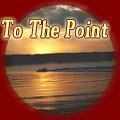- By Matthew P. Binkewicz
- News
 Print
Print  This week is National Library Week. First sponsored in 1958, National Library Week is a national observance sponsored by the American Library Association and libraries across the country each April. It is a time to celebrate the contributions of our nation's libraries and librarians and to promote library use and support. All types of libraries - school, public, academic and special - participate.
This week is National Library Week. First sponsored in 1958, National Library Week is a national observance sponsored by the American Library Association and libraries across the country each April. It is a time to celebrate the contributions of our nation's libraries and librarians and to promote library use and support. All types of libraries - school, public, academic and special - participate.The idea to promote libraries came about in the 1950's. Research showed that Americans were spending less time reading books and more on radios, televisions and music. Concerned with the alarming decline in reading, the American Library Association and the American Book Publishers formed a nonprofit citizens' organization called the National Book Committee in 1954. The committee's goals were ambitious. They ranged from encouraging people to read in their increasing leisure time to improving incomes and health and developing strong and happy family life.
In 1957, the committee developed a plan for National Library Week based on the idea that once people were motivated to read, they would support and use libraries. With the cooperation of American Library Association and with help from the Advertising Council, the first National Library Week was observed in 1958 with the theme "Wake Up and Read!"
The theme for this year's commemoration is "Communities thrive @ your library®." The visual rendering of this theme blends both traditional verbiage with the iconic “at sign” that is found in every web address and email. It demonstrates how libraries have evolved during the last decades of the 20th and into the 21st centuries to meet the traditional as well as the modern web needs of its patrons.
There are an estimated 122,566 libraries of all kinds in the United States. This astounding number is a real tribute to our principles of freedom. The types of libraries are categorized as public, academic, school, special-which consist of law, religious, corporate and medical, armed forces, government. The library work force includes librarians and other professionals, paraprofessionals, clerical and technical personnel. It represents a workforce of 342,000 individuals in full and part time positions.
Library statistics reveal a public that is very happy with their library. A 2008 Harris Poll reported that 68 percent of Americans have a library card, while 76 percent of Americans visited their local library in the past year. Almost all Americans, 92 percent, say they view their local library as an important education resource. Seven of 10 agreed their local library is a pillar of the community. Nearly 70 percent consider their library as their community center, family destination, and cultural center.
Overall, people are satisfied with their public library. Americans made 1.44 billion visits to libraries borrowing nearly 3 billion books, tapes, CD's and DVD's. Even those who do not have a library card express satisfaction with their libraries. 40 percent are extremely or very satisfied while 21 percent are somewhat satisfied.
Libraries are also very vulnerable institutions that rely on public funding. In times of plenty, libraries stand as proud symbols of America, but with any economic downturn, libraries are the first to feel the affects of budget cuts.
Libraries are a barometer for the social conscious of a nation. They are the great equalizer. They level out the playing field offering opportunities for everyone to explore, learn, dream, and simply lose themselves in a world of fun, romance, or adventure. Our library serves many people with a variety of services. Make a visit to the Lansing Library and see for yourself. And that is to the point.
----
v6i14



